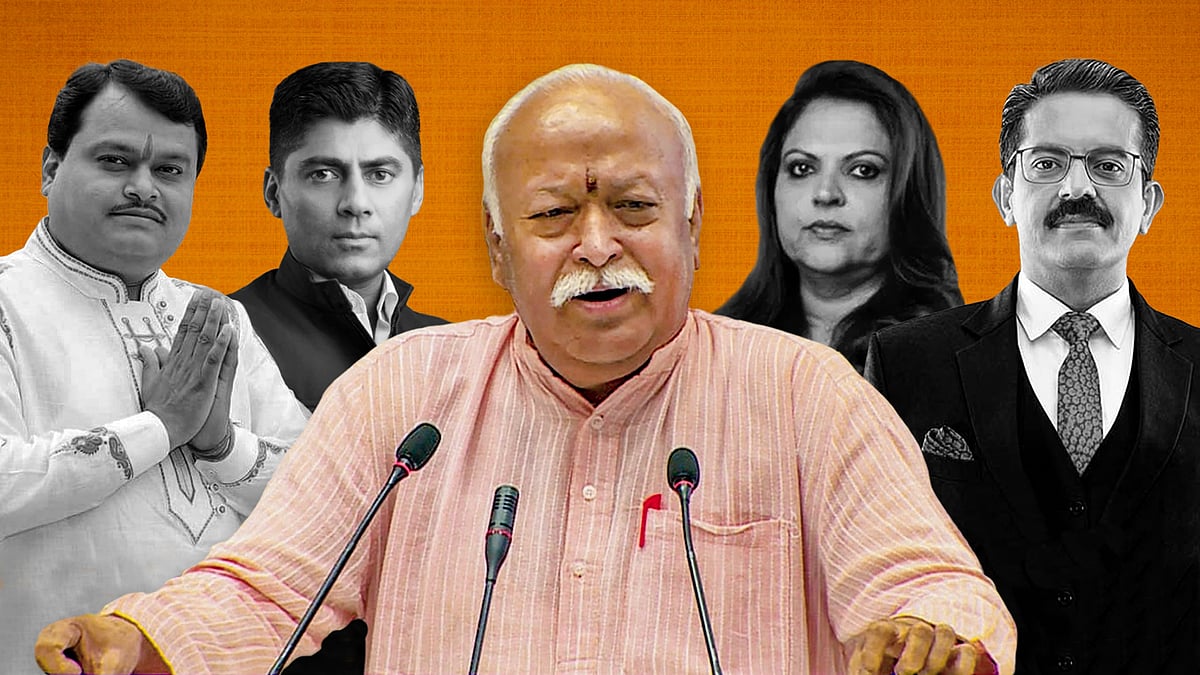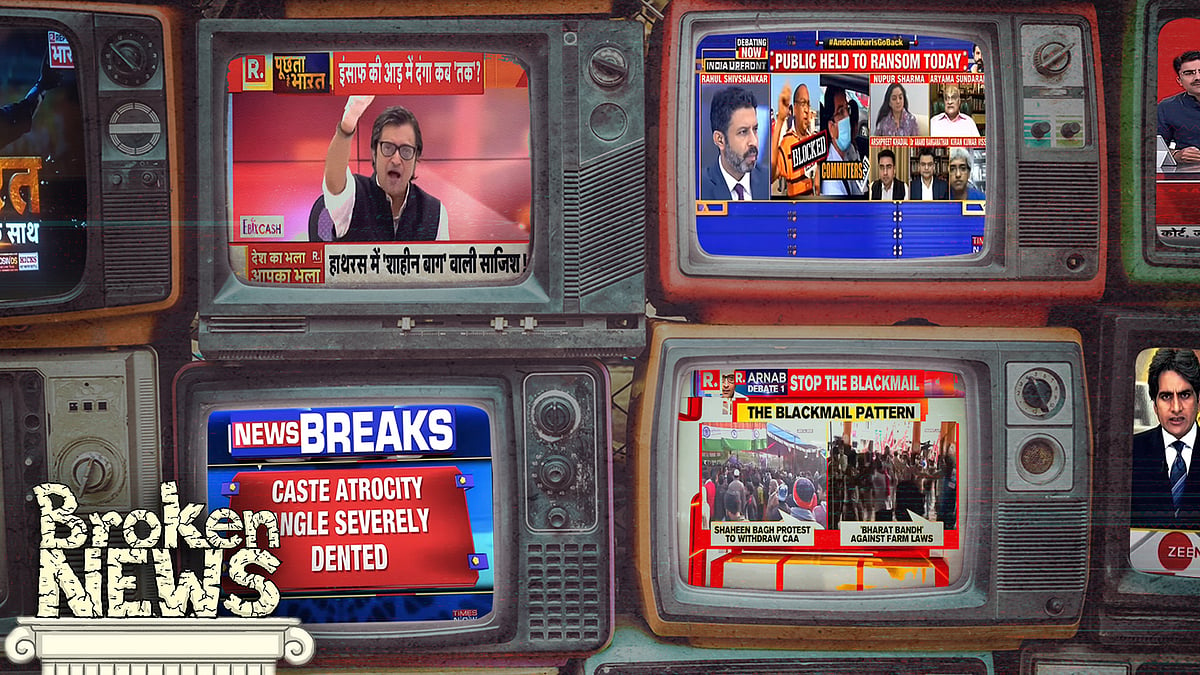From Narmada Bachao Andolan to farmer protests: Why the media must record history
Doing so is not being partisan, it’s the role of the media to document for future generations.
In his usual dramatic style, prime minister Narendra Modi pulled another rabbit from his topi on November 19.
After a year of ignoring the thousands of farmers protesting at the gates of the national capital, demanding the repeal of the three farm laws rammed through parliament by his government, after dismissing their agitation as nothing more than one that was instigated by "andolan jeevi", people who live for protests, he conceded. The laws are being repealed.
While the debate after the announcement has centered on the motives behind the climb-down, and the lessons all political parties can derive from the determination shown by the farmers, another question that must be asked is what lessons the media can learn from the way we covered this remarkable, and historic, civil movement.
With a media obsessively focused on “breaking news” and dramatic events, something as long lasting, and peaceful, as this protest poses a challenge precisely because it is not one, or even a series of events. It is the result of processes that include the state of agriculture and decades of frustration.
When we look back at this year, what viewers and readers are likely to recall in relation to the farmers' protest is a handful of events, such as the standoff between the Delhi police and some of the farmers on Republic Day this year, and how one group climbed the ramparts of the Red Fort in Delhi and raised a flag. Or images of traffic jams on the day the Samyukta Kisan Morcha called for a nationwide bandh.
The result of this kind of bits-and-pieces reporting is that only the spectacular, the violent, the confrontationist, remains in memory whereas the core of this remarkable movement might be erased from public memory.
What will be forgotten, because it was barely reported, was the amazing diversity represented in those who stayed the course over this year. They were women and men from several states, not just Punjab. Many came to show their solidarity. Yet many stayed on. Their stories are worth recording. A few diligent reporters, mostly outside the mainstream from independent digital platforms like Newslaundry, have done just that.
Also, early on the protesters were clear that they could not depend on mainstream media to tell their story. So, they set up their own digital website, Trolley Times.
There were so many stories to tell: the way this protest was organised, that it remained peaceful, that people were fed and housed, that medical aid was available, as this piece by Priya Ramani illustrates.
And let's not forget the women. They were not just helpers, making rotis and being in the background. They assumed leadership roles that only a few in the mainstream media noted.
Fortunately, after Modi's announcement, some in the media made an effort to provide adequate background to readers. The most notable was the November 20 edition of the Indian Express that reported not just the announcement but also provided readers with background of all aspects of the struggle.

And, of course, Ravish Kumar in his primetime programme on NDTV India, who gave us the visuals that we should always remember, including the extent to which the Delhi police went to prevent the protesters from entering the city by digging up the road, embedding spikes, and barricading them with huge containers.
It is not always easy to report on something that continues for so many months. How do you find new angles? Besides, how many media organisations are prepared to assign such movements as a legitimate beat for their reporters? I had discussed in a previous column, marking 300 days of the farmers' protest, the challenges journalists face in covering large civil society gatherings.
A similar challenge faced us decades ago when we reported on one of the longest civil society movements of recent times: the struggle against the big dams on the Narmada River and, specifically, the Sardar Sarovar Project in Gujarat.
The movement, the Narmada Bachao Andolan, was launched in 1985. It began with demanding proper rehabilitation for the people who would be affected by the dam. But in the face of refusal by the Gujarat government to even discuss this, it went on to oppose the construction of the dam.
The NBA successfully mobilised the tribal communities that would be most affected. It also asked questions about the environmental costs of the dam that would submerge many hectares of primary forests. The movement was one of the first to question developmental policies from the environmental perspective. Until then, large and grandiose projects were celebrated as great achievements in a developing country.
For the journalists covering this movement, there were many dimensions that needed to be understood. The perspective of the tribal communities who would be most affected by submergence, for instance. These were people who had lived for decades with developmental neglect such as lack of roads, medical care, education, sources of livelihood, etc. What little they could eke out from their lands and the forests was also being taken from them.
The counter story was India's need for electricity and water for irrigation. It was argued that only if projects were built on this scale could this be done and the collateral, in terms of submergence, was unavoidable.
This was a time when print dominated the media. We did not have 24/7 news channels. Hence, reporters and photographers had to tell this story. And like the farmers' protest, although there were a few dramatic events, the main story consisted of understanding and reporting on the reasons for the resistance, the extent of the impacts of the project, and the stands taken on both sides.
The movement, led by Medha Patkar and her team, did not succeed in stopping the Sardar Sarovar Dam from being built. But the protests drew international attention, and led to serious rethinking in the World Bank about funding such projects in the future.
The fact that even mainstream media houses sent out reporters and photographers to cover this protest played no small role in this. Without that kind of documentation, the movement might have been restricted to the specific areas where people had been mobilised, mostly well away from media centres.
When we look back, it is striking how many journalists followed the story over many years and their news organisations gave them the space to do so. It was an education in how the other half in this country survives. Going to those sites of submergence, seeing the conditions in which the tribal communities lived, understanding their continual struggle for basic survival was a lesson in understanding poverty and misguided developmental policies.
The tragedy is that even those villages that escaped submergence in these tribal districts, because they were on higher ground, continue to suffer neglect in terms of basic health care, education or road connectivity. In all these decades, little has been done to change this reality.
In this 2015 article, "Chronicle of a struggle retold" in the Hindu, sociologist Shiv Visvanathan beautifully encapsulates the decades of struggle by the NBA. He writes, "If you were to ask a middle class person today what the most significant act of history in India of the last 20 years is, most would say this – the rise of Narendra Modi. But to me, the most important historical event of the last two decades has been the battle over the Narmada dam."
The article is a calendar of events starting in 1961 when Jawaharlal Nehru laid the foundation stone of the Sardar Sarovar Project to December 2000, when 350 people trying to present a memorandum to the Chief Justice of India in Delhi about the project were arrested. The most memorable was the Narmada Sangharsh Yatra in December 1990, which was stopped by the Gujarat police at Ferkuva on the border of Madhya Pradesh and Gujarat. For those, including journalists, who want to get a glimpse of this long and peaceful civil society movement, Visvanathan's article is a vivid summary.
The lands and the forests of the tribals who lived on the banks of the Narmada are gone. The benefits of the irrigation and electricity generated by the project have not accrued to them. But their story has been documented – in films, in books, in newspaper articles.
The farmers who are protesting are not leaving yet. But their story, and that of their movement, awaits similar documentation. Doing this is not being partisan. It is what we ought to be doing. Recording history as it takes place, so that future generations will know why and how thousands of women and men, who grow the food we eat, chose to sit it out on New Delhi's borders in the heat, in the rain, in the cold for a year.
 ‘No agenda’, just ‘all issues’ on RSS: What happened at Mohan Bhagwat’s meeting with top editors?
‘No agenda’, just ‘all issues’ on RSS: What happened at Mohan Bhagwat’s meeting with top editors? See nothing, say nothing: How India's 'well-behaved' media approaches protests and civil movements
See nothing, say nothing: How India's 'well-behaved' media approaches protests and civil movements